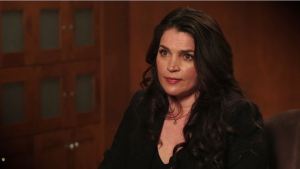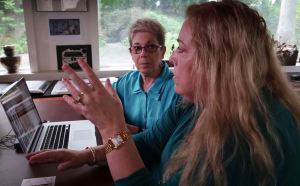Modern-day slavery, may sound like an oxymoron, but it is a very real nightmare for millions of people around the world. Various forms of slavery, human trafficking, forced labor, and the sex trade continue to endure despite global efforts to eradicate them.
An estimated 27 million people are enslaved worldwide, greater than at any other point in history, according to the U.S. State Department. Human trafficking generates more than $32 billion annually, as criminals profit profit from the slavery of victims from the least developed areas in the world.
While developing countries bear the brunt of the problem, modern-day slavery is still very present in the developed world, especially the United States – more than 150 years after President Abraham Lincoln issued the Emancipation Proclamation. An estimated 100,000 to 300,000 children are victims of human trafficking each year in the United States. In this week’s episode, Full Frame turns its lens on the motives and behaviors that have enabled slavery to continue into the 21st century.
An Unseen Problem in Front of Us Everyday
As an actress, Julia Ormond rose to fame playing lead roles in films such as Legends of the Fall, First Knight, and Sabrina. Today, you can watch her casting spells on the Lifetimes series, Witches of East End. While pursuing her acting career, Ormond has also worked to raise public awareness around the world about human-trafficking and modern-day slavery. Ormond became involved with the issue in the 1990s, witnessing the plight of women and children trafficking victims in Eastern Europe, especially during the crisis in Kosovo. Since then, she has become a staunch advocate and was appointed as a United Nations Goodwill Ambassador against Slavery and Human Trafficking in 2005.
As a Goodwill Ambassador, Ormond established the Alliance to Stop Slavery and End Trafficking, or ASSET, which works with corporations, NGOs, government officials, and individuals to find ways to eliminate the economic impetus for slavery, placing an emphasis on international supply chains. In 2010, ASSET championed the California Transparency in Supply Chains Act , requiring major retail sellers and manufacturers operating in California to publicly disclose efforts to eliminate slavery and human trafficking from their direct supply chain. This legislation is the first in history to directly link business to human-trafficking.
Ormond sits down with CCTV’s Mike Walter to talk about her work in the human trafficking arena and offers further insight into the complexities of the slave trade and its relationship to other human rights issues.
Follow Julia Ormond @JuliaOrmond
Putting a Price on Humanity
Think about your best friend, mom, dad, brother, or sister. Now, how much money would you sell them for? For most people, this is a degrading way to think about another human being. However, in the human trafficking industry, individuals are nothing more than commodities, like sugar, cotton, or wheat. Kevin Bales, co-founder of Free the Slaves and author of Disposable: New Slavery in the Global Economy, has traveled around the world, interviewing present-day slaves and slave owners and collecting data to track trends in the international slave trade. His estimate for the global average price of a slave: $90.
Bales joins Full Frame from London to talk about how the global economy has changed the slave trade and what we should be doing to eradicate it.
Follow Kevin Bales @kevin_bales
How to Think Like a Trafficker
While sex trafficking is recognized as a problem throughout the world, law enforcement still struggles to eliminate it. One of the major challenges is that the tactics used by traffickers change constantly, leaving traditional reactive policing strategies ineffective. To counter this problem, police have to develop more innovative strategies to find the operations, but also to keep young people away from them for good. Full Frame contributor, Sandra Hughes, spent some time with the Los Angeles Police Department to find out how they’re combating the complex problem and how organizations, like Crittendon Services for Children and Families, work help survivors recover from their traumatic experiences.
How a Child Becomes Prey
Prostitution has often been referred to as a victimless crime, but it is far from victimless. Survivor, Holly Austin Smith knows this all too well. When Smith was only 14, a sex trafficker picked her out of a crowd; he sensed her vulnerable nature—a product of her adolescence and years of sexual abuse. The man befriended her and, within hours of running away from home, she was forced into prostitution. It wasn’t until a chance encounter with a police officer days later that she was able to regain her freedom.
Since her harrowing experience, Smith has testified before U.S. Congress, advocating for stronger anti-trafficking laws, and authored a book, Walking Prey, which examines commercial child trafficking in the United States.
Holly Austin Smith sits down with Mike Walter to share her story and discusses how law enforcement officers need to be trained to realize that any child forced into the sex trade, regardless of the circumstances, is a victim.
Follow Holly Austin Smith @Holly_A_Smith
Finding Freedom of Expression after Enslavement
Lastly, Full Frame visits the studio of photographer Kay Chernush. Chernush first became involved with documenting the impact of human trafficking when the U.S. State Department assigned her to create photographs for their annual Trafficking in Persons Report. After the assignment, she decided to use her photography to make a difference. She established Artworks for Freedom, a non-profit organization that uses the power of art in the fight against modern slavery and human trafficking.
Chernush talks to Full Frame about her creative process and how she empowers human-trafficking survivors through her artwork.
Follow Artworks for Freedom @artworksfreedom
Tune in to Full Frame on CCTV America at 7:00 pm EDT on September 20, 2014. Or watch the live stream of the program here.
 CGTN America
CGTN America





